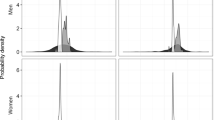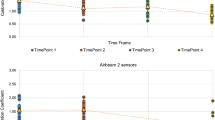Abstract
Personal exposures, indoor and outdoor concentrations, and questionnaire data were collected in three retirement center settings, supporting broader particulate matter (PM)-health studies of elderly populations. The studies varied geographically and temporally, with populations studied in Baltimore, MD in the summer of 1998, and Fresno, CA in the winter and spring of 1999. The sequential nature of the studies and the relatively rapid review of the mass concentration data after each segment provided the opportunity to modify the experimental designs, including the information collected from activity diary and baseline questionnaires and influencing factors (e.g., heating, ventilation, and air-conditioning (HVAC) system operation, door and window openings, air exchange rate) measurements. This paper highlights both PM2.5 and PM10 personal exposure data and interrelationships across the three retirement center settings, and identifies the most probable influencing factors. The current limited availability of questionnaire results, and chemical speciation data beyond mass concentration for these studies, provided only limited capability to estimate personal exposures from models and apportion the personal exposure collections to their sources. The mean personal PM2.5 exposures for the elderly in three retirement centers were found to be consistently higher than the paired apartment concentrations by 50% to 68%, even though different facility types and geographic locations were represented. Mean personal-to-outdoor ratios were found to 0.70, 0.82, and 1.10, and appeared to be influenced by the time doors and windows were open and aggressive particle removal by the HVAC systems. Essentially identical computed mean PM2.5 personal clouds of 3 μg/m3 were determined for two of the studies. The proposed significant contributing factors to these personal clouds were resuspended particles from carpeting, collection of body dander and clothing fibers, personal proximity to open doors and windows, and elevated PM levels in nonapartment indoor microenvironments.
This is a preview of subscription content, access via your institution
Access options
Subscribe to this journal
Receive 6 print issues and online access
$259.00 per year
only $43.17 per issue
Buy this article
- Purchase on Springer Link
- Instant access to full article PDF
Prices may be subject to local taxes which are calculated during checkout






Similar content being viewed by others
References
Bahadori T, Issues in particulate matter exposure assessment: relationship between outdoor, indoor, and personal measurements. Doctoral dissertation, #1.MHT.1998.4, Harvard School of Public Health, Boston, Massachusetts, 1998
Conner T, Private communication, U.S. Environmental Protection Agency, NERL, Research Triangle Park, NC 27711 1999
Dietz RN Goodrich RW Cote EA and Wieser RF, Detailed description and performance of a passive perfluorocarbon tracer system for building ventilation and air exchange measurements. In: Trechsel H.R., and Lagus P.L. (Eds.), Measured Air Leakage of Buildings, ASTM STP 904. American Society for Testing and Materials, Philadelphia, PA 1986 pp. 203–264
Evans G, Highsmith V, Sheldon L, Suggs J, Creason J, Walsh D, Rodes C, and Lawless P, The 1999 Fresno particulate matter exposure studies: comparison of community, outdoor, and residential PM mass measurements. JAWMA (2000) 50: 1887–1896 (submitted)
Hanley J, Ensor D, Smith D, and Sparks L, Fractional aerosol filtration efficiency of in-duct ventilation air cleaners. Indoor Air (1994) 4: 169–178
Lawless P, and Rodes C, Maximizing data quality in the gravimetric analysis of personal exposure sample filters. JAWMA (1999) 49: 1039–1049
Morandi M, Stock T, and Contant C, A comparative study of respirable particulate microenvironmental concentrations and personal exposures. Environ Monit Assess (1988) 10: 105–122
National Research Council. Research Priorities for Particulate Matter I: Immediate Priorities and a Long-Range Research Portfolio, National Academy Press, Washington DC 1998
Ozkaynak H, Xue J, Spengler J, Wallace L, Pellizzari E, and Jenkins P, The particle TEAM (PTEAM) study: analysis of the data. Final report, Volume III; EPA/600/R-95/098 U.S. Environmental Protection Agency, U.S. Government Printing Office, Washington, DC, 1996
Patterson P, and Eatough D, Indoor/outdoor relationships for ambient PM2.5 and associated pollutants: epidemiological implications in Lindon, Utah. JAWMA (2000) 50: 103–110
Pellizzari E, Clayton A, Rodes C, Mason R, Piper L, Fort B, Pfeifer G, and Lynam D, Particulate matter and manganese exposures in Toronto. Atmos Environ (1999) 33: 721–734
Rodes C, Kamens R, and Wiener R, The significance and characteristics of the personal activity cloud on exposure assessment measurements for indoor contaminants. Indoor Air (1991) 2: 123–145
Rodes C, Thornburg J, Ensor D, Lawless P, and Wallace L, Relating personal PM exposures with outdoor and microenvironmental indoor concentrations. Presented at AWMA PM2000 Conference, Charleston, SC, January 24 2000
Rojas-Bracho L, Alba N, Suh H, Koutrakis P, and Oyola P, Characterization of personal exposures to oxidant and particulate air pollution in Santiago. In: Scientific Program Outline and Abstracts, ISEE/ISEA 1999 International Conference. Epidemiology (1999) 10 (4) 68(supplement)
Thornburg J Ensor DS Rodes CE Lawless PA Sparks LE and Mosley RB, Penetration of particles into buildings and associated physical factors: Part I. Model development and computer simulations. Research Triangle Institute, Research Triangle Park, NC. Aerosol Sci Technol (2001) 34: 209–221(submitted)
U.S. Environmental Protection Agency, National ambient air quality standards for particulate matter; final rule. Fed Reg July 1997 62(138): 1–102
Wallace L, Indoor particles: a review. JAWMA (1996) 46: 98–126
Wallace L, Correlations of personal exposure to particles with outdoor air measurements: a review of recent studies. Aerosol Sci Technol (2000) 32(1)15–25
Williams R, Suggs J, Creason J, Rodes C, Lawless P, Kwok R, Zweidinger R, and Sheldon L, The 1998 Baltimore particulate matter epidemiology-exposure study: Part 1. Comparison of ambient, residential outdoor, indoor and apartment particulate matter monitoring. J Exposure Anal Environ Epidemiol (2000a) 10(5)497–505
Williams R, Suggs J, Creason J, Rodes C, Lawless P, Kwok R, Zweidinger R, and Sheldon L, The 1998 Baltimore particulate matter epidemiology-exposure study: Part 2. Personal exposure assessment associated with an elderly study population. J Exposure Anal Environ Epidemiol (2000b) 10(6)533–543
Acknowledgements
This work has been funded in part by the U.S. Environmental Protection Agency under contract 68-D5-0040, work assignments 29, 37 and 41, to the Research Triangle Institute. It has been subjected to Agency Review for policy and approved for peer-reviewed journal submittal. Mention of trade names or commercial products does not constitute an endorsement or recommendation for use. The dedicated field sample and data collections by Randy Newsome, Don Whitaker, Sanjay Natarajan, Doug VanOsdell, Eric Meyers, and Jennifer Douglas are greatly appreciated, as well as the meticulous gravimetric filter analyses of Kaemi Combs and Tricia Webber — all from the Research Triangle Institute. The helpful technical assistance and PFT sample analyses by Russ Dietz at Brookhaven National Laboratories are greatly appreciated. The determined logistical and administrative support provided by Ross Highsmith at EPA, without which this project would not have been completed, are greatly appreciated.
Author information
Authors and Affiliations
Corresponding author
Additional information
Presented at AWMA PM2000 Conference, Charleston, SC, January 2000.
Rights and permissions
About this article
Cite this article
RODES, C., LAWLESS, P., EVANS, G. et al. The relationships between personal PM exposures for elderly populations and indoor and outdoor concentrations for three retirement center scenarios. J Expo Sci Environ Epidemiol 11, 103–115 (2001). https://doi.org/10.1038/sj.jea.7500155
Received:
Accepted:
Published:
Issue Date:
DOI: https://doi.org/10.1038/sj.jea.7500155
Keywords
This article is cited by
-
Reduction of personal PM2.5 exposure via indoor air filtration systems in Detroit: an intervention study
Journal of Exposure Science & Environmental Epidemiology (2019)
-
Estimating ambient-origin PM2.5 exposure for epidemiology: observations, prediction, and validation using personal sampling in the Multi-Ethnic Study of Atherosclerosis
Journal of Exposure Science & Environmental Epidemiology (2019)
-
Residential indoor and personal PM10 exposures of ambient origin based on chemical components
Journal of Exposure Science & Environmental Epidemiology (2014)
-
Human exposures to PAHs: an eastern United States pilot study
Environmental Monitoring and Assessment (2013)
-
Personal exposure monitoring wearing protocol compliance: An initial assessment of quantitative measurement
Journal of Exposure Science & Environmental Epidemiology (2012)



